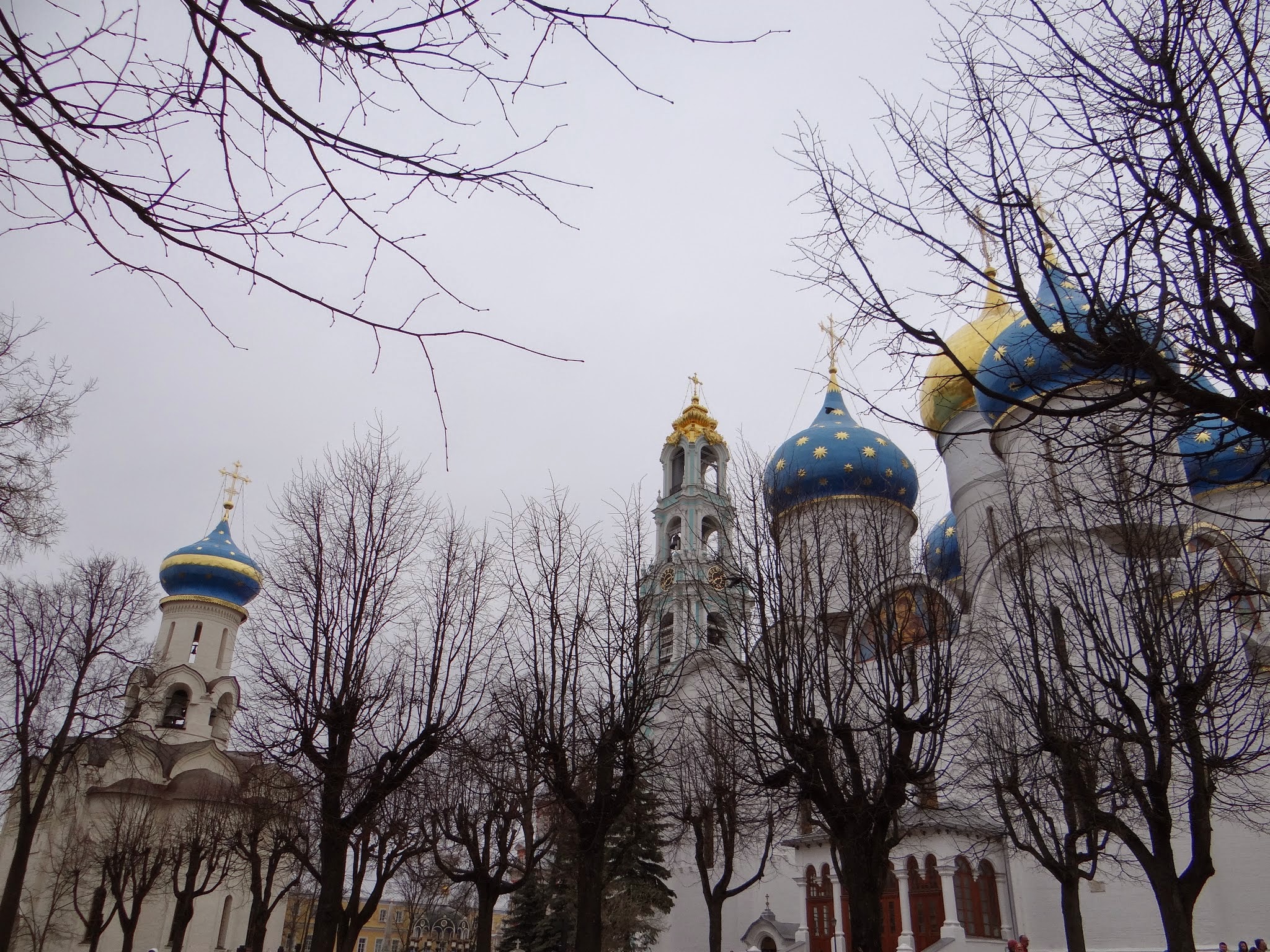Sergiyev Posad, the spiritual heart of Russia
Not far from Moscow, some 70km to the North, lies the small town of Sergiyev Posad (Сергиев Посад), home to Russia’s most important monastery: the Trinitry Lavra of St. Sergius, that has UNESCO World Heritage Status.
Sergiyev Posad is an interesting day trip from Central Moscow, and a recommended outing for those travellers that have already ticked Moscow’s main highlights of the to-do list and looking to see a bit more of Russia without leaving the comforts of the capital.
How to get to Sergiyev Posad
The best way to reach Sergiev Posad from Moscow is possibly by train. The town is on the Moscow-Yaroslavl trunk line, so train service is frequent (literally every 10-15min during daytime).
From Moscow Yaroslavl station (Ярославский Вокзал) trains take between 1h (if taking a fast train) or 1h 30min a slower (and cheaper) commuter train.
Prices can vary a lot between the normal suburban trains (fare can be 300 rubles, or around €5) or the faster trains that you can book in advance (with some tickets going for up to more than 2,000 rubles, or some €30)
Visiting Sergiyev Posad - What to see
Sergiyev Posad is named after Saint Sergius of Radonezh, one of the most venerated saints of the Russian Orthodox Church, who is said to have founded the first religious establishment at this spot in 1337.
In fact, when St.Sergius first moved into this area, in the 14th Century, he was intending to live an ascetic life, alone in the middle of the forest.
Yet, with time, other monks arrived to join him and the community kept growing to the point that a proper monastery was built.
The other component of the town’s name “Posad”, refers to the emergence of this community, since this was the name typically given to settlements next to fortresses or monasteries.
The buildings visitors see today, though, are quite old, but don’t date back to that foundational era.
In fact, the oldest of the structures within the Lavra (like most Russian monasteries, the Trinitry Lavra is a complex of stand-alone buildings within a territory enclosed by walls) is the Trinity Cathedral, that dates from 1422 (the same year St.Sergius was declared a saint).
This cathedral appears much smaller than the neighbouring 16th Century Assumption Cathedral, but actually, it has quite a remarkable religious significance, since it is in the Trinity Cathedral that St. Sergius relics are kept (they were returned to the Lavra in 1946, after years in hiding).
The largest building and the one that takes a central spot within the complex is the Assumption Cathedral, built in the 16th Century in times of the tsar Ivan the Terrible (1547-1584). Here are the remains of Boris Godunov, the late 16th and early 17th Century Russian ruler that inspired the opera of the same name.
Proof of the important role that the monastery at Sergiyev Posad has played in Russian history is the fact that, in successive centuries, some of the most remarkable tsars left an imprint on it.
Peter the Great took refuge here in the early, convulsed, years of his reign and added a palace.
Her daughter, Empress Elizabeth used to do an annual pilgrimage to Sergiyev Posad, conferred it the title of “Lavra” and added a 88m. bell tower that is, by far, the tallest structure in the whole area.
For most of its history, Sergiyev Posad was, likely, Russia’s richest monastery.
Thoughout the centuries, some of the most celebrated artists and architects of the time came over to take part in the works, starting with medieval master painters such as Andrei Rublev, that, together with fellow painter Daniil Chyorny decorated the first cathedral at Sergiyev Posad, or 17th Century painter Simon Ushakov, some of whose masterpieces decorate the Cathedral of the Assumption.
The Trinitry Lavra at Sergiyev Posad continues to to be an important religious center to this date (this role was only interrupted between 1920 and 1945, between the Revolution and the end fo WW2), with a community of some 300 monks living here.
Walking around, you can see how tourists mix with those that have come to pray and expressions of religious devotion are commonplace.
People collecting holy water from a well. The well was discovered in 1644 and has its own chapel attached.
Where to eat in Sergiyev Posad
If you are going on a day trip to Sergiyev Posad, you want to have the lunch options covered after an intense morning visiting the monastery.
A good option is Russkiy Dvorik, located on the road just outside the monastery’s walls.
The look from outside (and the name) is a bit touristy, yes, although the crowd is mainly “local” (from Moscow) Russian tourists. The place is quite cozy inside and the food (mostly Russian specialities, pretty good too). I particularly recommend tasting the local Medovukha, a traditional Russian beer-like drink made with honey.
Russky Dvorik
Prospekt Krasnoy Armii, 134/2
Sergiev Posad







